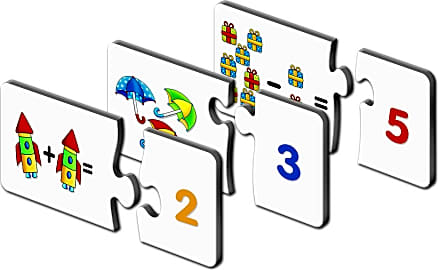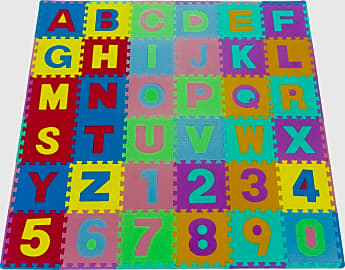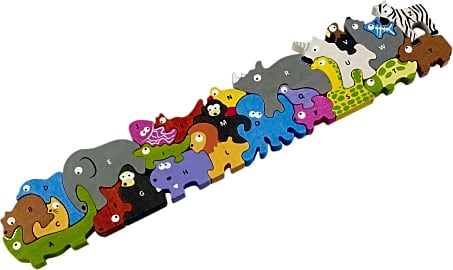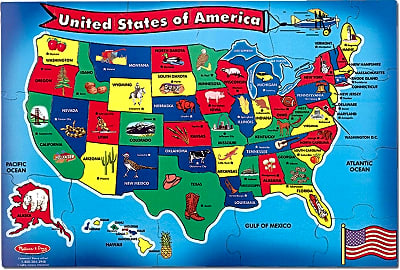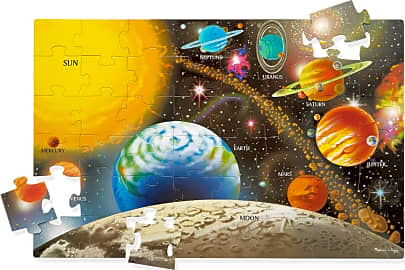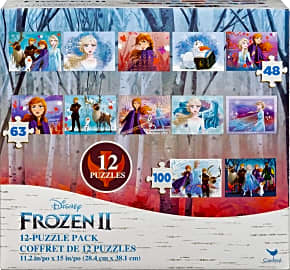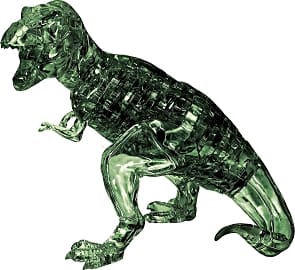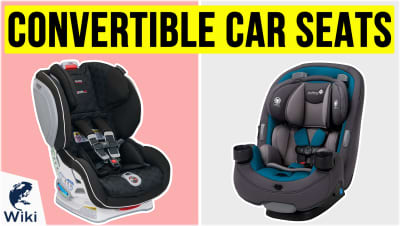The 10 Best Puzzles For Kids

This wiki has been updated 40 times since it was first published in April of 2016. Looking for a way to keep your children quiet and entertained at the same time without having to spend a ton of money? Try one of these puzzles for kids. Coming in a variety of designs suitable for different ages, they are not only a great way to keep youngsters busy on a rainy day, but can also help develop concentration, focus, hand-eye coordination, and shape and color recognition. When users buy our independently chosen editorial selections, we may earn commissions to help fund the Wiki.
Editor's Notes
February 16, 2021:
When it comes to items for children, we always favor educational ones, especially when they can provide just as much, if not more, fun than standard toys that don't teach anything. It was with this in mind that we decided to make a few changes to our recommendations. One puzzle we eliminated was the Learning Journey: Glow in The Dark Space. While it does show children images of various celestial bodies, we feel the Melissa & Doug Solar System is better because it not only shows the images, but also labels them.
Furthering our focus on educational puzzles, we eliminated the Ravensburger Pirate Battle in favor of the Mudpuppy Arctic Life. While both are entertaining and well made, the latter includes an activity and comes with a chart showing the names of the various animals children can search for inside the completed puzzle.
We also swapped out the Disney Frozen 4-Pack for the Spin Master Frozen 2. This wasn't because of educational reasons, but rather because we know how picky kids can be and if there is a newer release of their favorite cartoon, they are always going to want toys from it. Plus, both were right around the same price, and the latter comes with 12 puzzles instead of four.
March 03, 2019:
There are at least two criteria that should always be considered when choosing the best puzzles for a kid: their skill level and interests. Buying one that is too challenging may result in a child becoming frustrated or dejected and giving up, while picking one that is too easy will be boring. Also, the more interested they are in a subject matter, the more engaging it will be for them. Another option is to choose a puzzle that helps teach certain skills, such as counting or the alphabet. The Learning Journey Match It! Mathematics, Matney Mat, and Melissa & Doug USA Map are some examples of educational models on our list. If you want to choose one based on subject matter, Mudpuppy Construction, BeginAgain Animal Parade, Learning Journey: Glow in The Dark Space, Ravensburger Pirate Battle, and of course, the Frozen 4-Pack are all items that come in themes known to be popular with young children. Bepuzzled 3D Deluxe T-Rex, while challenging and better for kids over 10, is an interesting take on puzzles, since once assembled, it is essentially a figurine that can be displayed on a shelf. The SainSmart Jr. HeaUp is another unique take on puzzles, as it doesn't have a single correct method of assembling it. Instead, much like the game it is modeled after, there are many placement options for each piece.
The Cognitive And Practical Benefits Of Puzzling
For the rest of the world’s children, puzzles are captivating, mysterious games that activate our centers of imagination and critical thinking simultaneously.
If your child is liable to find puzzles frustrating enough to literally bang his or her head against the wall when presented with them, then you’ve encountered the only situation in which puzzles are not good for the development of the human brain. For the rest of the world’s children, puzzles are captivating, mysterious games that activate our centers of imagination and critical thinking simultaneously.
The most basic of children’s puzzles may not seem like much of a puzzle to adults, but it lays the foundation for all subsequent puzzling, and it’s also indicative of the benefits thereof. We’re talking about the old geometric pegboard, a toy that asks toddlers to match the shapes of objects with correspondingly shaped holes in a small table.
The purpose of the game is to develop a child’s physical motor skills in addition to a mental system of taxonomy that separates objects by appearance and other sensory data. In infancy, this system is pre-linguistic, but children can actively discern shapes among triangles, squares, and circles, as well as their individual colors. This cognitive development, when language eventually layers on top of it, allows the brain to build an expansive and nuanced catalogue of object relationships.
Any puzzle your child plays as he or she grows out of this much simpler stage will have some similar cognitive benefits, but it’d be a mistake to think that these benefits level off when the child grows into adulthood. To begin with, children who engage in puzzles at a young age are more likely to do so as they age. Since there is a vast continuum of puzzles available for any age range and intelligence set, it’s a hobby that can grow with them for the rest of their lives. What that can do for the adult brain is particularly special, as active mental engagement in puzzles like crosswords has been shown to combat the onset of certain forms of dementia and Alzheimer’s disease.
On a more practical level, puzzling can have a communal aspect to it. Many of the most popular puzzle types for kids resemble the classic jigsaw puzzle. Not only can these games pass tremendous amounts of time on rainy days, they also invite multiple participants to join in the search for the missing pieces and their partners. With a little puzzle glue, you can cement a success for posterity, frame it, and let your child begin a poster collection consisting of all their favorite puzzles. In this instance, each puzzle hanging on the wall will remind them — whenever they look at it — of both their achievement and of their interaction with whoever helped them solve it.
How To Choose A Kids' Puzzle
Unlike your choice of car seat or crib, the selection of a good puzzle for your kid can be pretty worry-free. They’re inexpensive toys, to be sure, but they’re also so numerous on the market that if you take one home and your child want’s nothing to do with it, it’s a simple thing to try another style. That said, decreasing even the smallest hassles is a big blessing for parents, and there are some things you can take into account to increase your chance of success with a given puzzle.
Make sure you get a puzzle the components of which are not choking hazards, and hopefully that are also easy to clean.
If your kids have developed any kind of aversion to educational toys in their first few years, it might be wise to stay away from these. Remember, the cognitive and practical benefits of these toys extend beyond their being exact replicas of the solar system or their ability to overtly teach your children math. The process of solving almost any puzzle will work wonders for their brain development, so don’t stress out if you can’t get your three-year-old to assemble a scale model of the New York City subway system.
Should your children not balk at educational materials, then by all means load up on puzzles that tickle their understanding of numbers and geography as much as they do their sense of geometry, color, and association. There are puzzles out there that they can assemble with no knowledge of their greater educational goals, and then return to to help reinforce lessons taught to them in their first few years of schooling.
If your child is young enough that all they’re really going to do with their puzzle is put its pieces in their mouth and slowly erode them with drool, then the only thing you really have to think about is piece size. Make sure you get a puzzle the components of which are not choking hazards, and hopefully that are also easy to clean.
A Brief History Of Toys And Kids' Playtime
Toys and puzzles for children don’t play as large a role in the history of humankind as you might initially believe. Puzzles have been a part of our history since at least the 2nd century B.C.E., but these were notoriously difficult to solve, and were made from materials that might not have been safe for young children.
Educational philosophers from the 17th to 19th centuries theorized that toys with an educational bent could stimulate children to higher states of learning. Up until that point, kids played with little more than toy dolls. John Locke first posed the idea that letter blocks could potentially give children an edge in learning the alphabet, and assembling words with these blocks could be considered a kind of puzzle.
It was Friedrich Frobel who made the biggest contribution to this area of play, however. When he created his famous Frobel’s Gifts, a collection of wooden toys with puzzling aspects designed to engage the minds of young children. Many of his toy designs continue to inform manufacturers and innovators in the industry today.


